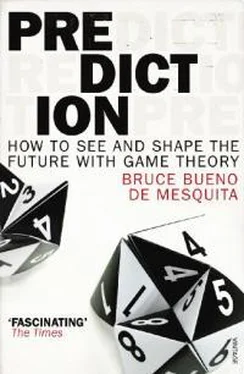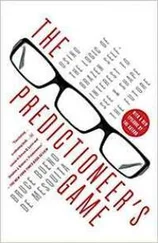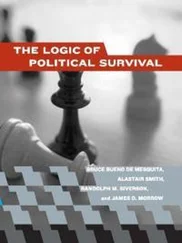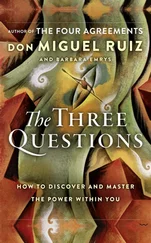The second maneuver that was required was considerably more challenging to “sell” to the defendant. The company’s directors were naturally very concerned about this matter and were eager to find a solution. The simulations—remember, all of this analysis is happening before discussions with the U.S. attorney have begun—showed that the directors were so fearful of how the case was likely to unfold that they would cave in to the mounting pressure from the opposition hard-liners by agreeing to numerous felony counts including one count of the severe felony—that is, the hard-liners’ chess gambit was going to work. To produce no severe felonies, getting instead multiple misdemeanors and one lesser felony as the plea, it was necessary to control the reaction of the board when the U.S. attorney pressed hard for an outcome the board was prepared to live with. The strategy for them was simple to articulate but hard to do: they had to take the position that they would not negotiate or authorize any discussion of felonies at all, risking the ire of the U.S. attorney and a breakdown in discussions.
They would have to repeat this message convincingly through months of negotiations between the U.S. attorney and their attorneys. Their attorneys would have to keep going to meetings with the U.S. attorney in which they repeated the message that they were unable to persuade the board to show some flexibility, followed by a plea that the U.S. attorney must give them the ammunition to convince their board that the matter could be settled. That ammunition was for the U.S. attorney to stand up to the hard-liner government attorneys, shooting down their arguments in front of the defendant’s attorneys when they all sat in meetings together. That was the way for the U.S. attorney to flip the hard-liners’ gambit on its head. To achieve this end, the board had to go along with the idea of their lawyers insisting on going to meetings with the hard-liners in attendance rather than trying to have private meetings with the U.S. attorney as they actually preferred.
Just imagine the board’s reaction. Their first thought was “Who is this guy with the chutzpah [not a word they would have used] to tell us what to do when our entire business is on the line?” Indeed, when I proposed the optimal monetary offer to settle the case, an offer way below what they thought should be put on the table, they thought I was nuts. When I suggested that their attorneys should meet with the hard-liners as well as the U.S. attorney, they thought I was beyond nuts.
The model found that the optimal offer and settlement price was about a third of what the board thought they should make as their opening offer, and it found that this offer was best made in the presence of both the U.S. attorney and the hard-liners. The board members were sure the U.S. attorney would just get up and walk out if they did what the model was recommending. Fortunately, some of the other people involved in the case had worked with me, my partner, and the model before. They thought that the board should listen, and that they would listen if they just had an opportunity to confront the arguments head-on. With that in mind, the lead in-house attorney set out to arrange a meeting for me with a very senior executive from the firm. That senior representative would put the board’s case before me and see if I could make convincing arguments based on the model’s results—that is, could I persuade this executive that the strategy developed through the game was not nuts?
Mind you, I have faced this sort of situation many times. Anyone who works on behalf of my firm on a project is instructed never—let me repeat that word, never —to argue for or against an approach to a problem except based on results that can be pointed to directly in the model’s output. We have no place for personal opinion. We are not experts on the substance of the problems we analyze, and generally we know little even about the industry involved, so there is no reason for anyone to take our personal opinions seriously. It is the very fact that we can show that the positions, tactics, and strategies we recommend come out of the model’s logic and the client’s data and not out of our heads that sells the client on the independence and the credibility of the view we express. They can argue with the model’s logic—that’s a conversation we love to have—and sometimes they do, but they always know that they will have to disagree with the logic or with the data inputs derived from our expert interviews (usually with their own experts), and not with us. Logic and evidence, not anyone’s personal opinion, are the focus of our presentations, briefings, and discussions and are, in the end, the basis on which people should decide whether to try an approach contrary to their initial intuition.
No one should blindly follow a model. It is, after all, just a bundle of equations. But neither should people dismiss a model’s results out of hand just because its implications and their personal opinions differ. To repeat myself, the model’s greatest value is that it provides clients with a different way of thinking about their problems. That is an important part of the power that game theory, strategic thinking, brings to the table. Fortunately, as it turns out, clients generally find that the logic makes sense to them, and the data, after all, are theirs and can be adjusted and rerun to see how robust the findings are. So in the end, when they listen to us it is because they are sold on the integrity of the process.
Of course, not all clients “check their intuition at the door.” When they don’t follow the model’s advice, the model’s prediction for what is likely to follow in that case tends also to be accurate. They end up with an outcome that is typically a lot less favorable. In the case at hand, the board’s senior management representative was sold on the model-based advice after examining me and the results for about eight grueling hours. The board agreed to go ahead with the approach we recommended.
To communicate the message credibly, the firm’s general counsel agreed to meet with the U.S. attorney, and requested, even insisted, that the hard-liners be present. Naturally, this insistence came as a surprise to the U.S. attorney. It was an even bigger surprise and a deep disappointment to the hard-liners. According to the model, they were eager to be backstabbers behind the scenes, sheltered from the light of day. They wanted to take a shot at influencing, maybe even cajoling or coercing, the U.S. attorney after he/she met privately with the firm’s general counsel. They tried to get out of attending a meeting with the general counsel, claiming scheduling conflicts. The firm’s general counsel deflated that maneuver by stipulating that he/she would meet whenever it was convenient for them. Their hopes for executing their gambit were crushed. By our surprise move, they lost that opportunity.
The general counsel conveyed the board’s (sincerely held) conviction that they had done nothing that warranted criminal charges beyond misdemeanors. The general counsel went on to argue that the firm’s agreeing to what the U.S. attorney was demanding was tantamount to giving up the affected, important part of their business. The message was that the board would not even contemplate any sort of deal that involved pleading guilty to felonies.
Of course, we knew that if push came to shove, the firm would have caved in and accepted one or more counts of the serious felony even if doing so would destroy an important part of their operations. They would have done so to bring the process to a speedy end so that they could get on with the rest of their business. They believed that even if they prevailed in court—recognizing that this is always uncertain even in the best of circumstances—the political, social, and economic costs of a prolonged trial would be unbearable. It was better to settle on a plea agreement and suffer the consequences. Remember Arthur Andersen (not the firm involved in this case). The company fought the charges against it resulting from its audits of Enron and was found guilty in court, only to have that judgment overturned by the Supreme Court after it was essentially no longer in business. Sometimes it is worse to win in court than to accept a plea agreement even when you are innocent. The judicial process may eventually come to the right answer, but too often the right answer only comes after unendurable costs have been borne by the defendant.
Читать дальше











